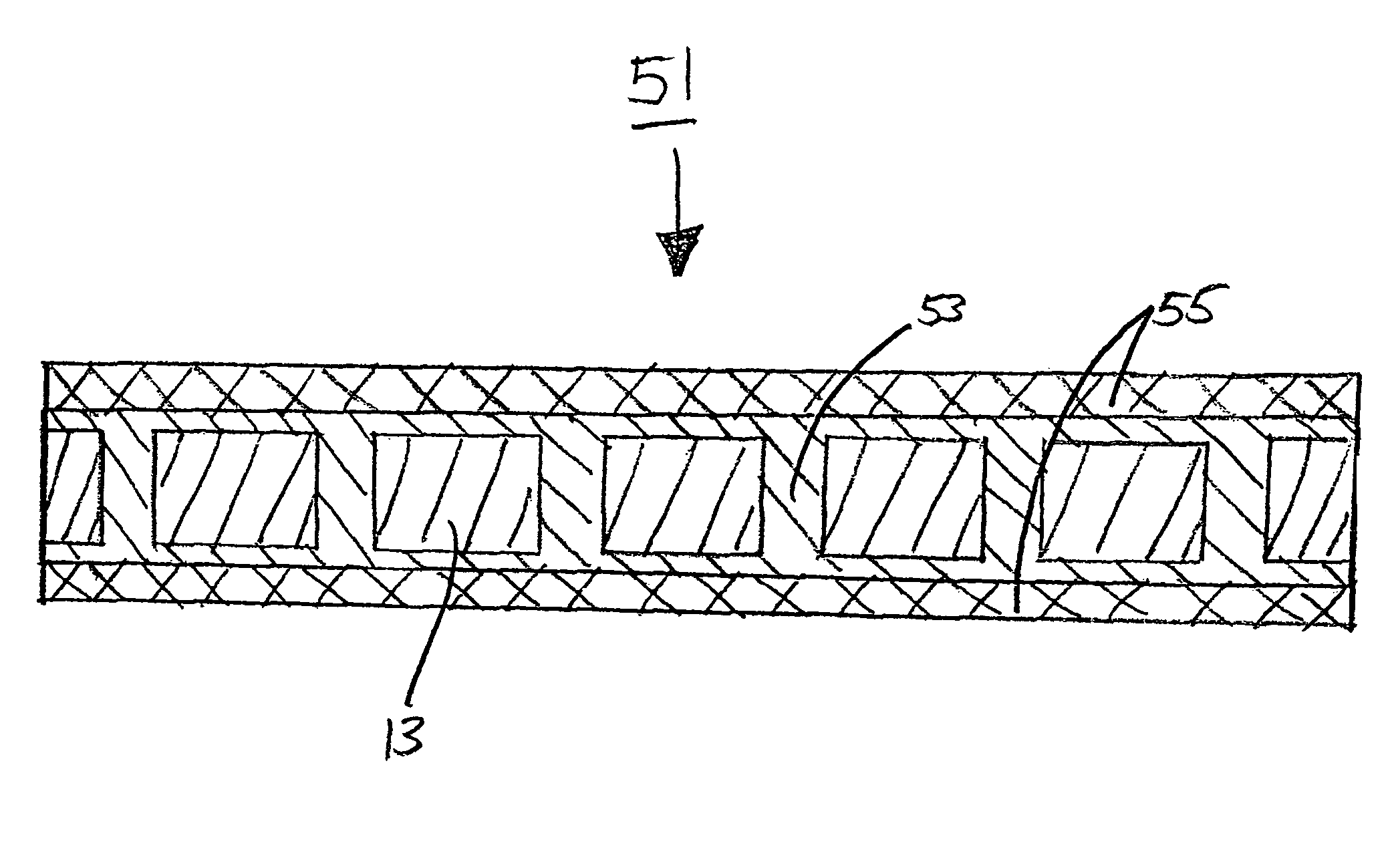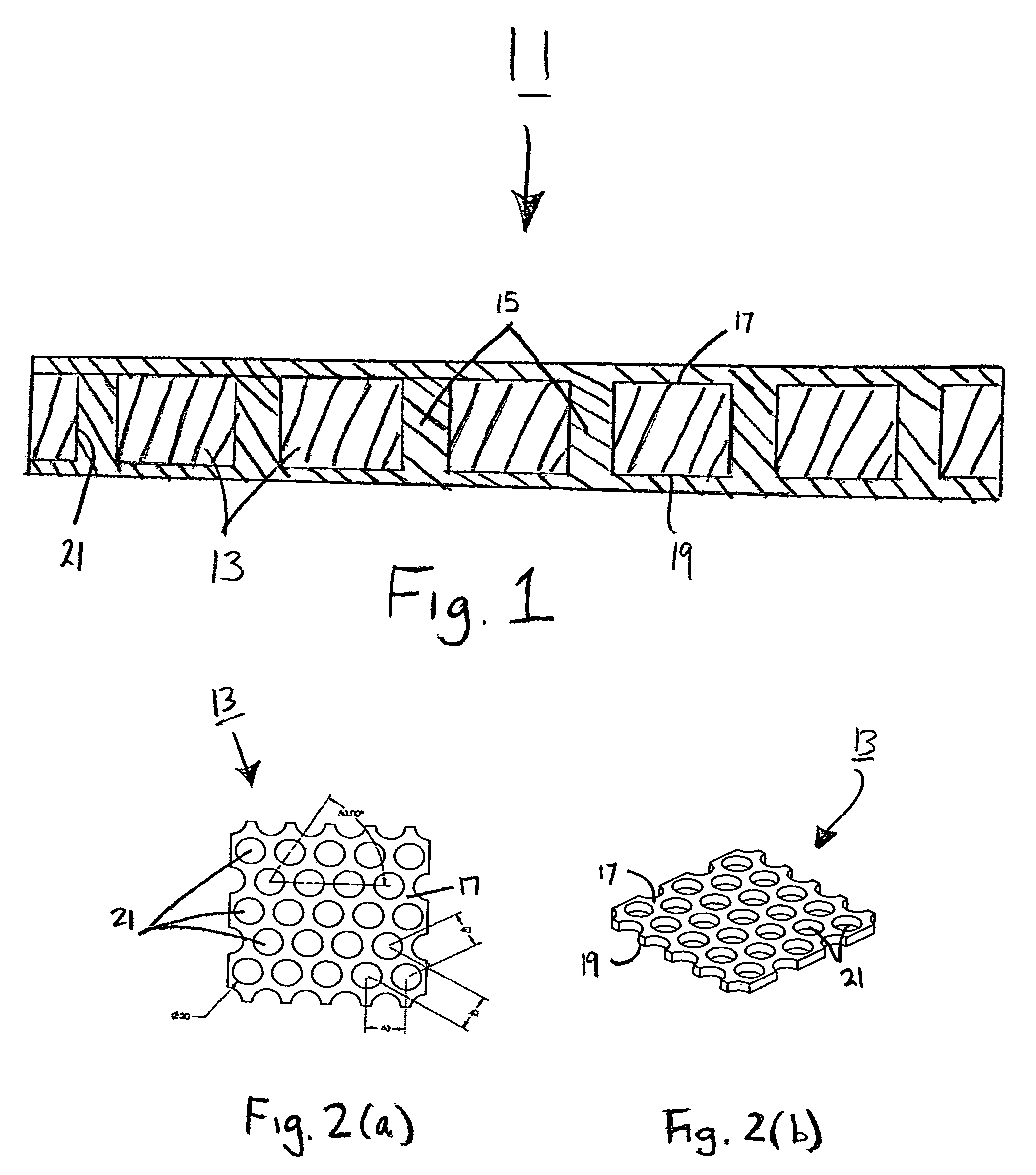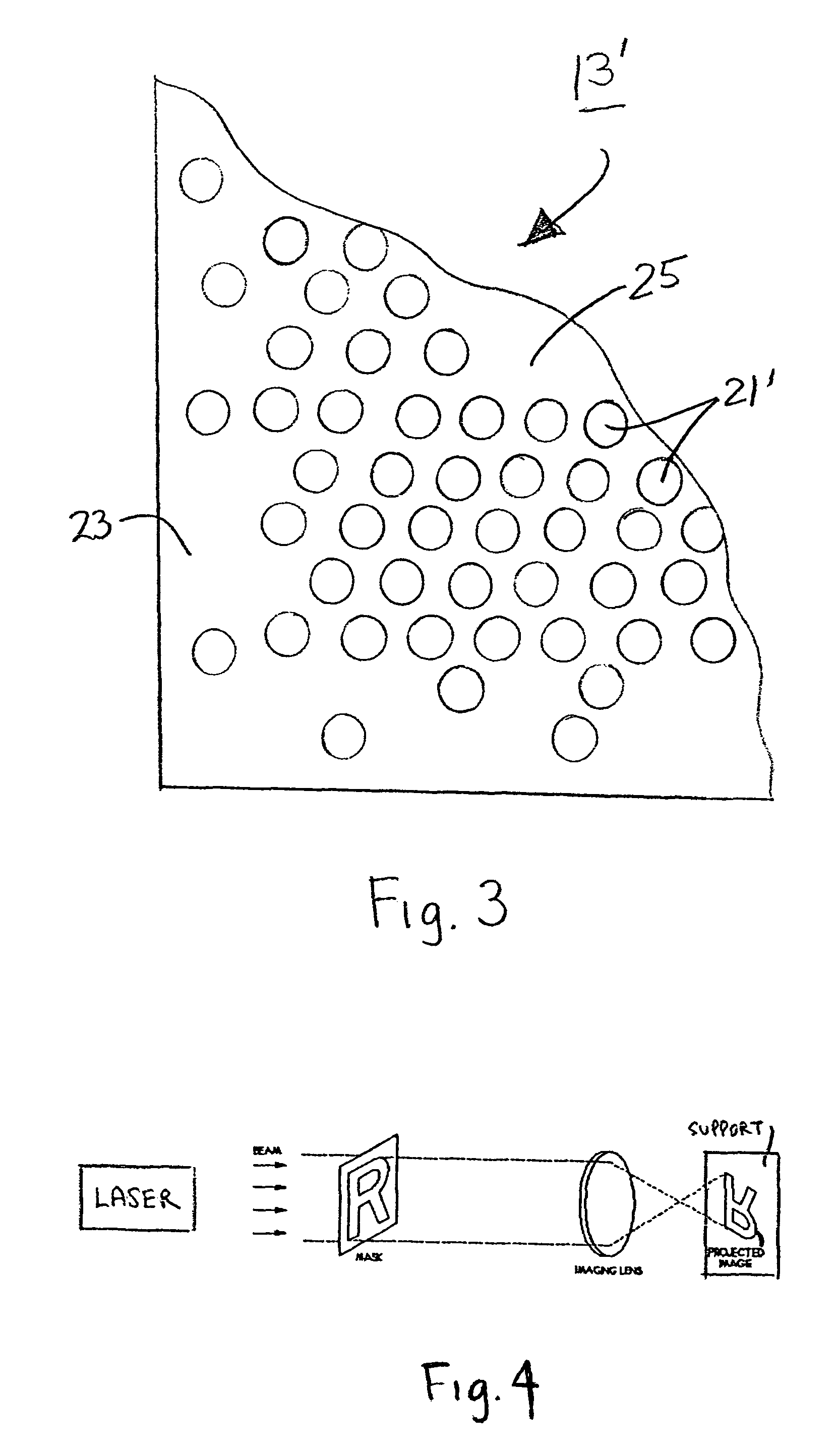Solid polymer electrolyte composite membrane comprising porous ceramic support
a technology of porous ceramic support and composite membrane, which is applied in the direction of fuel cells, primary cells, secondary cells, etc., can solve the problems of premature failure of cell operation, increased shorting, and increased tensile strength of pfsa pems
- Summary
- Abstract
- Description
- Claims
- Application Information
AI Technical Summary
Benefits of technology
Problems solved by technology
Method used
Image
Examples
example 1
[0060]A plurality of pores were formed in a piece of 25 μm thick silica film using an excimer laser and near-field imaging. The diameter of each pore was 30 μm, and the distance between the centers of the pores was 60 μm. NAFION® PFSA solution, with an equivalent weight of 1100, was coated onto the porous film, and the product was then heated to dry off the solvent from the coated PFSA solution and to cure the PFSA polymer. The resultant composite membrane had a thickness of approximately 32 μm. The wet through-plane conductivity of the membrane was 0.05 S / cm, as compared to 0.10 S / cm for the neat ionomer.
example 2
[0061]A 25 μm NAFION® precursor membrane in the sulfonyl fluoride form was pressed into a 60 μm WHATMAN ANODISC filter having a 1.0 μm pore size. Such pressing was effected at 350° C. at 300 psi for 1 hour. Conversion of the sulfonyl fluoride form of the membrane was then effected by hydrolyzing overnight with imidazole at 60° C. The resulting wet room temperature through-plane-conductivity of the membrane was 0.04 S / cm, as compared to 0.10 S / cm for the neat ionomer.
PUM
| Property | Measurement | Unit |
|---|---|---|
| diameter | aaaaa | aaaaa |
| diameter | aaaaa | aaaaa |
| diameter | aaaaa | aaaaa |
Abstract
Description
Claims
Application Information
 Login to View More
Login to View More - R&D
- Intellectual Property
- Life Sciences
- Materials
- Tech Scout
- Unparalleled Data Quality
- Higher Quality Content
- 60% Fewer Hallucinations
Browse by: Latest US Patents, China's latest patents, Technical Efficacy Thesaurus, Application Domain, Technology Topic, Popular Technical Reports.
© 2025 PatSnap. All rights reserved.Legal|Privacy policy|Modern Slavery Act Transparency Statement|Sitemap|About US| Contact US: help@patsnap.com



